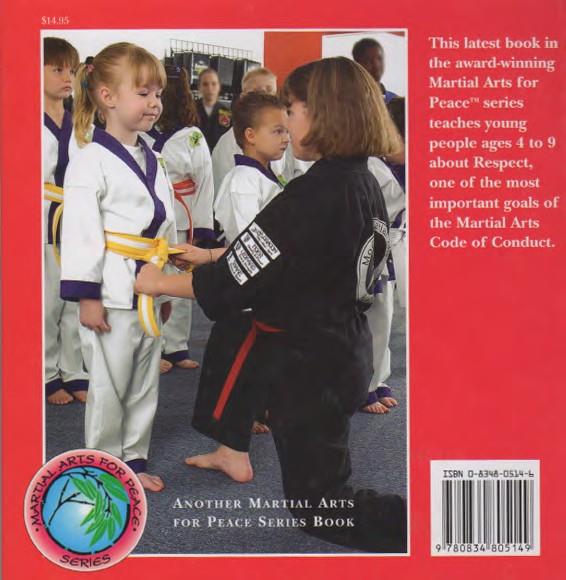

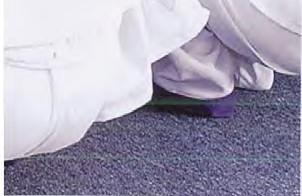

Respect
The Martial Arts
Code of Conduct
by Terrence Webster-Doyle
WEATHERHILL
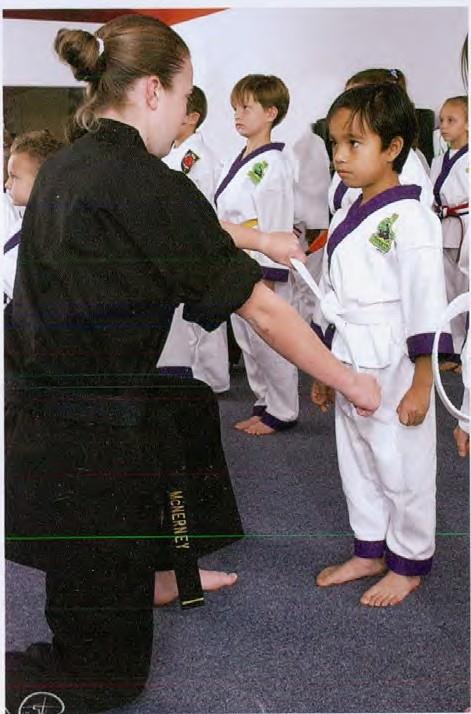
First edition. 2002
Published by Weatherhill. lnc., 41 Monroe Tumpike, Trumbull, CT 06611. Protected by copyright under the terms or the Tnternarional Copyright Union; aJJ riglus reserved. Except for fair usc in book reviews, no pan of L11is book may be reproduced for any reason by any means, including any method or photographic reproduction, without pennission of Weatherhill, lnc. Printed in China.
07 06 0.5 04 03 02
9 8 7 6 5, 1 32l
Library of Congress Cataloging-in-Publicacion Data available
ISBN 0-8348 0514-6
Special thanks LO our photographer.John Seberg (Scbcrg Photography. lnc., on the web at www.scberg.com), and to Damon and Kimber Hill and the students of the Modern Marti.al Arts Academy. DeLand, Florida.
4
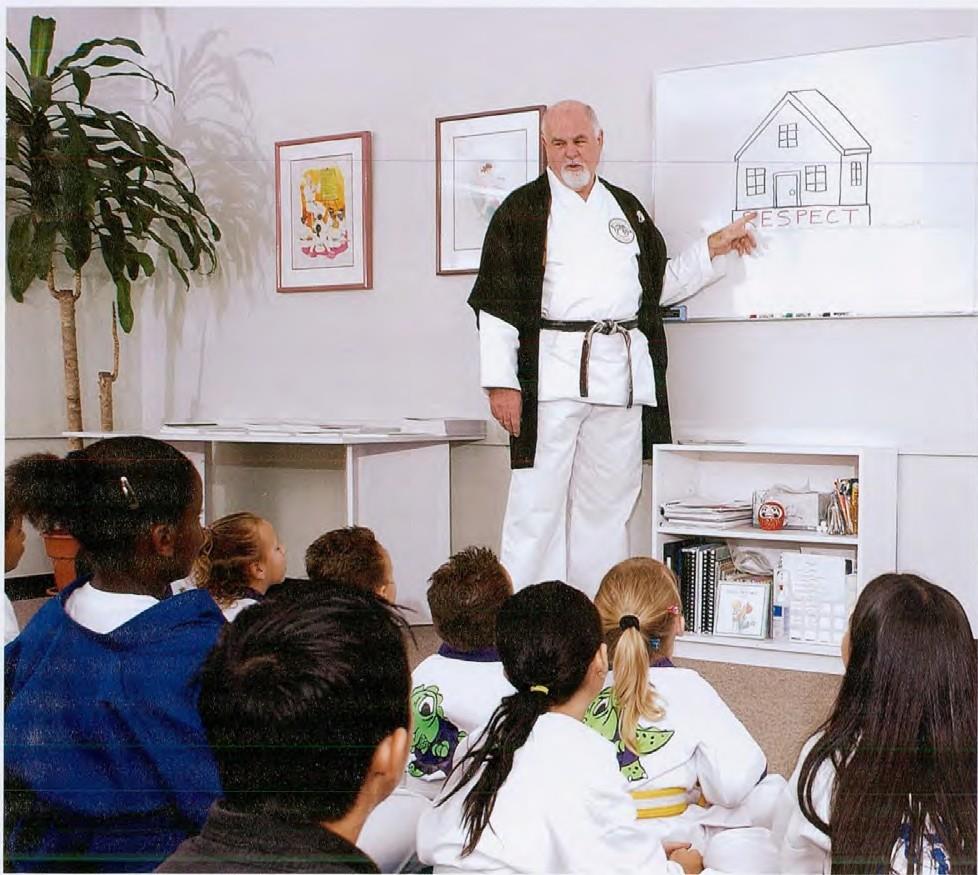
Today at our martial arts school we are learning about Respect. Respect is the foundation of the Martial Arts Code of Conduct.
s
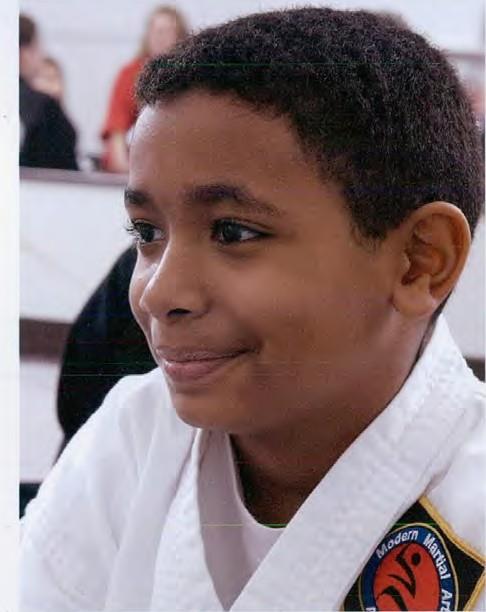
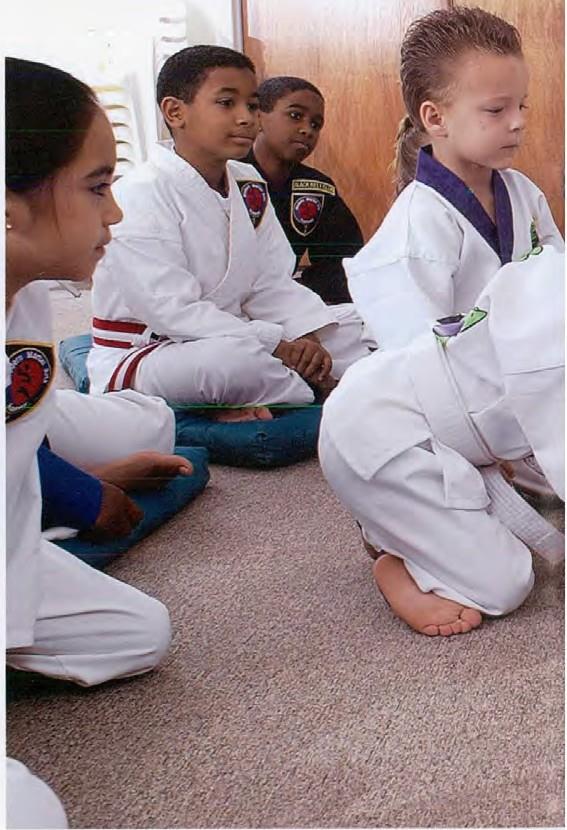
Respect means acting like a gentleman
or gentlewoman. It means respecting
our parents, teachers, and friends.
Respect also means caring for our-
selves, taking care of our bodies by
keeping them healthy and clean. It
means eating healthy foods and get-
ting enough exercise and thinking
healthy thoughts.
6
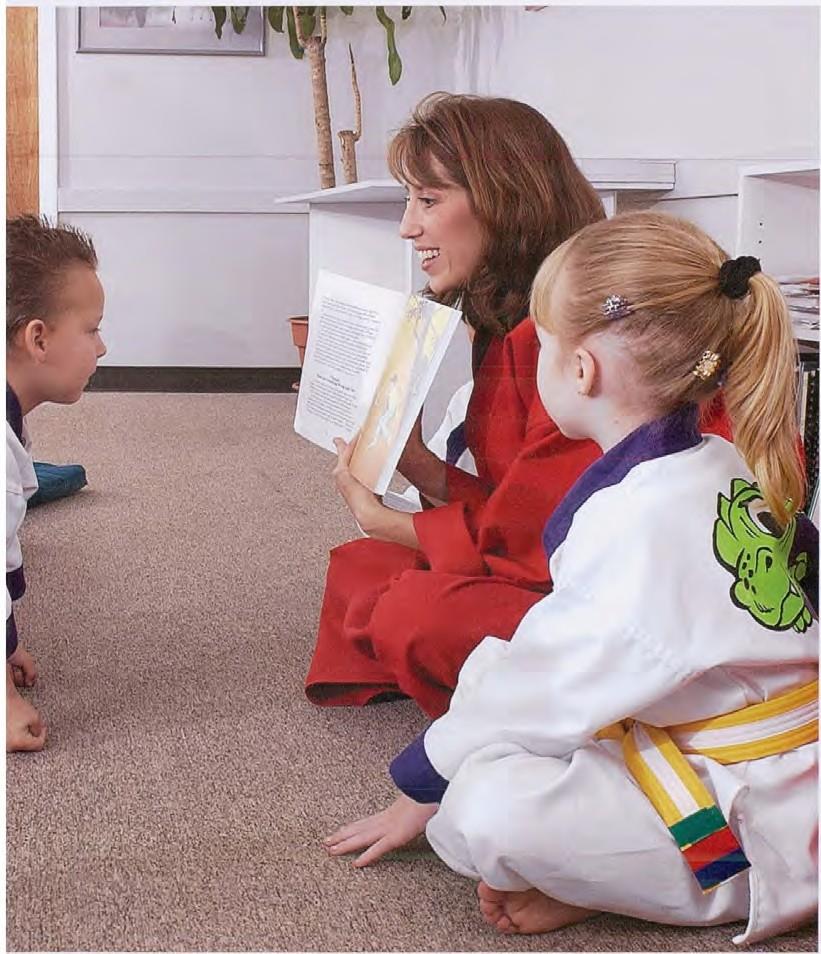
The Martial Arts
Code of Conduct
is a set of rules
to live by. Our
teachers tell us
thal a "code"
describes a way
of behaving that
makes a better
life for everyone.
It is how we act,
what we do every
day that allows us
to live peacefully
and happily with
one another.
7

Studying the
martial arts
teaches us how to
stop a bully from
hurting us. But it
also teaches us to
respect the bully
because a bully is
just someone who
has been picked
on too, someone
who has been
hurt and feels
angry. This is a
part of our Code
of Conduct: to act
with kindness
even to those who
want to hurt us.
8
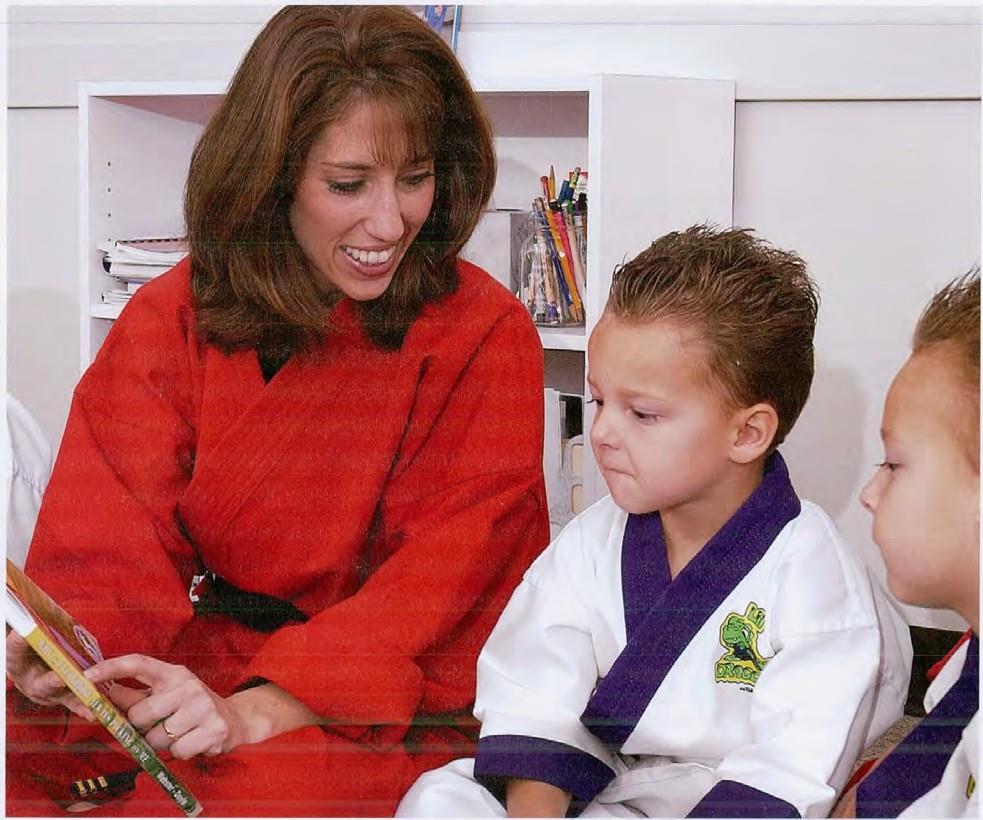
Our teachers help us understand how other people feel and how everyone just wants to be liked. They tell us that kindness-treating people like we would like to be treated-is an important part of the Martial Arts Code of Conduct.
9
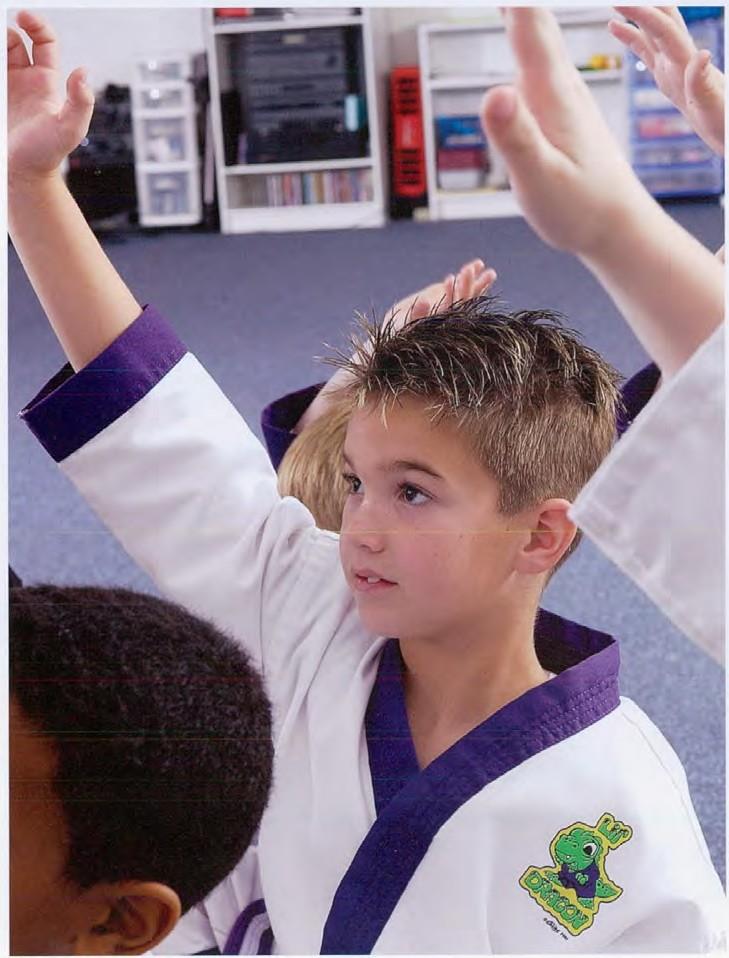
We need to be
kind to people,
especially people
who are less for-
tunate than us. If
someone is very
old or sick or
has a disability,
it 1nay be diffi-
cult for. them to
do the ordinary
things that we
can do. We need
to be kind to all
living creatures.
Being kind to
our pets means
feeding them
and making sure
they are not
hurt in any way.
10

Our teachers tell us that the Martial Arts Code of Conduct is like a map. When we travel, a map shows us how to get to where we want to go. The Martial Arts Code of Conduct gives us directions to follow as we travel on the road of life, and shows us how to get along with people we meet on the way.
11

Courtesy is also part of the Martial Arts Code of Conduct. Courtesy is being polite, like saying, "May Ir or "Please" when we want something and "Thank you" when someone docs something for us. If a new student comes to our school it is polite to say hello and to make him or her comfortable being in a new place with new people. Courtesy is really just being nice.
12
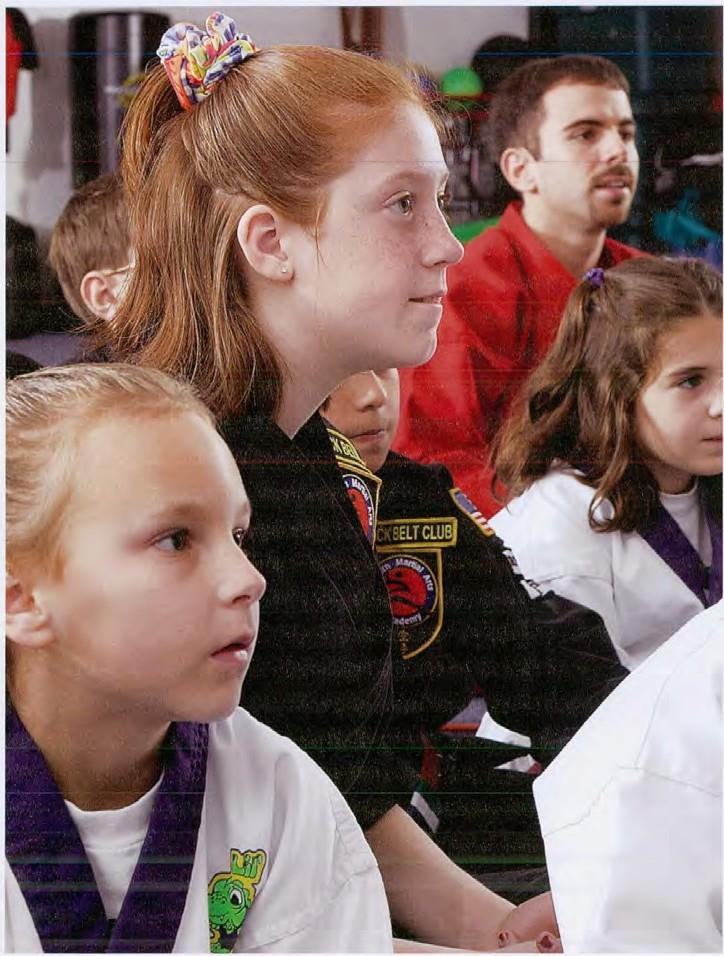
The Martial
Arts Code of
Conduct tells us
about the
importance of
being honest.
Being honest is
telling the truth,
to others and to
ourselves. It is
also acting
honestly, doing
what we believe
is right and not
doing what we
know is wrong.
It means treating
people fairly, as
we would want
to be treated.
13
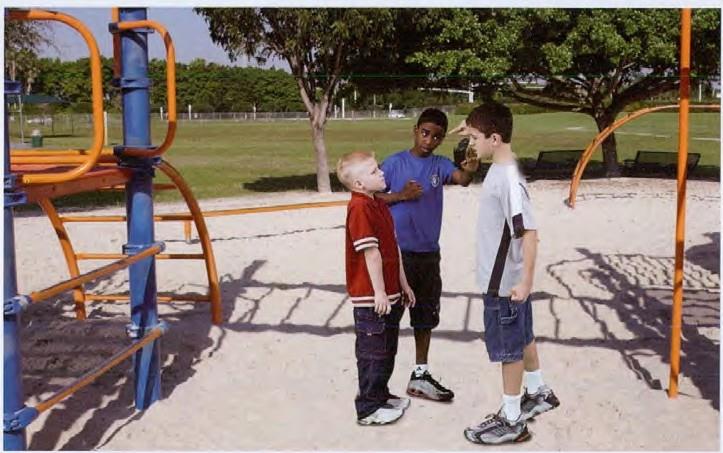
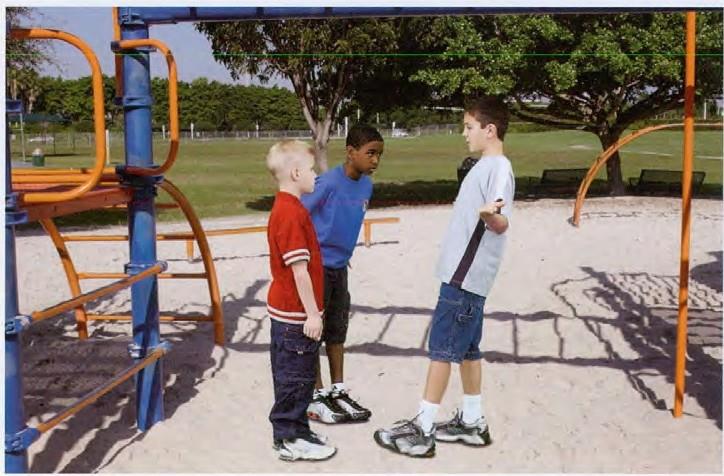
The Martial
Arts Code of
Conduct tells
about the
importance of
courage. Having
courage means
being brave
enough to stand
up for what is
right. If a bully
is picking on
someone it will
take courage to
make the bully
stop. We also
need to be brave
when we are
sick or lonely or
bad things are
happening.
14
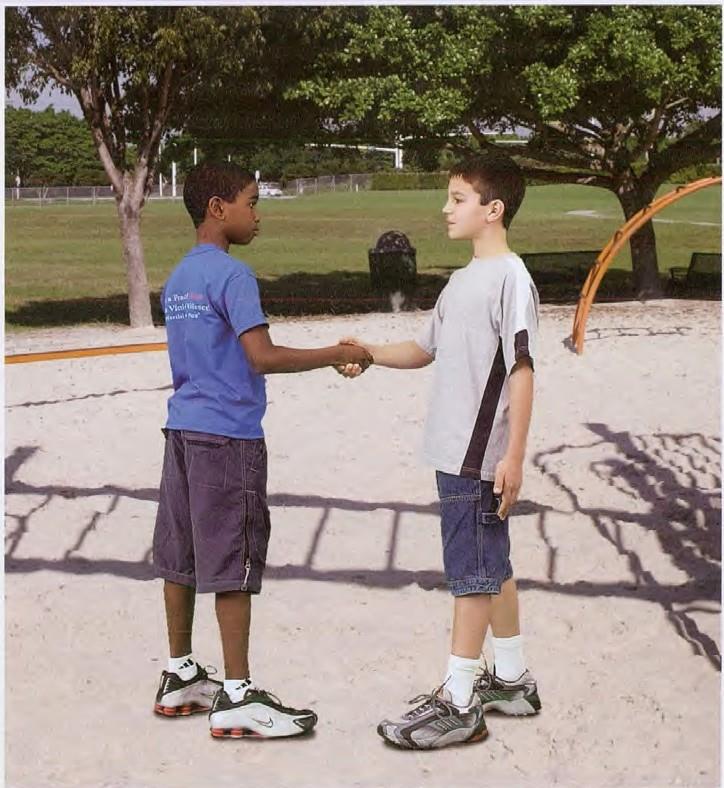
Our teachers tell us that life is full of challenges and that we need to be brave to meet them with a strong spirit. We need to have courage to live the Martial Arts Code of Conduct even when others around us are being disrespectful.
Our teachers
tell us that life is
a test of our
character. Having
character means
living by the rules
of the Martial
Arts Code of
Conduct. Having
character rneans
being strong even
if we feel weak
inside. Having
character means
treating people
with kindness
even if we don't
feel like it.
15
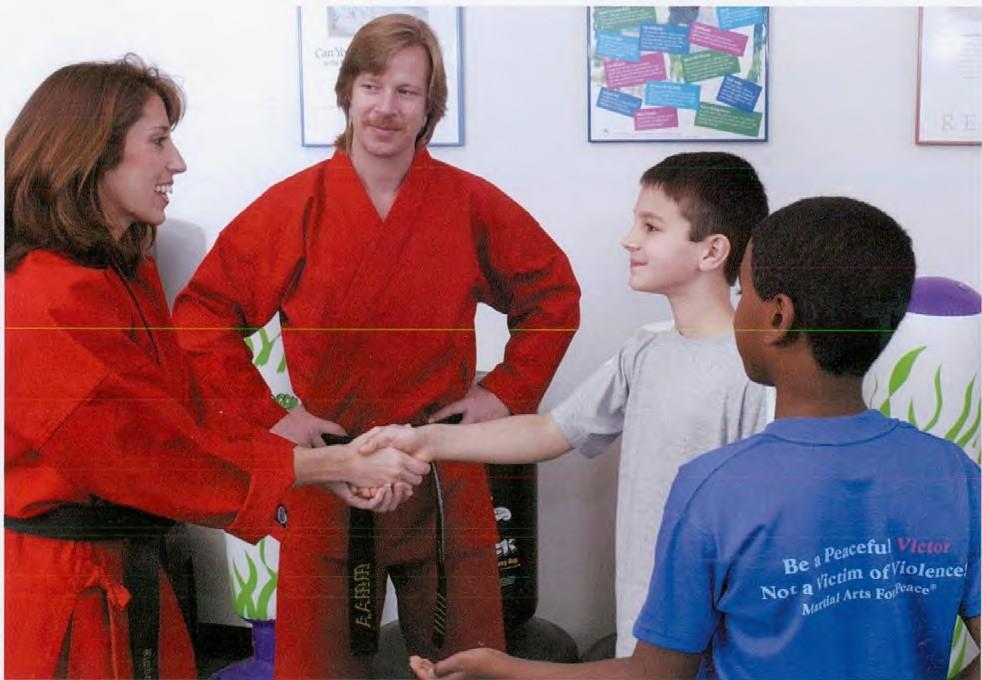
Our teachers tell us that because we are human we will make mistakes. They tell us not to judge ourselves harshly, not to think that we are bad. They say that if we 1nake a mistake, if we are unkind or disrespectful, we should forgive ourselves and just keep on trying. As long as we are trying we are doing the best we can.
16
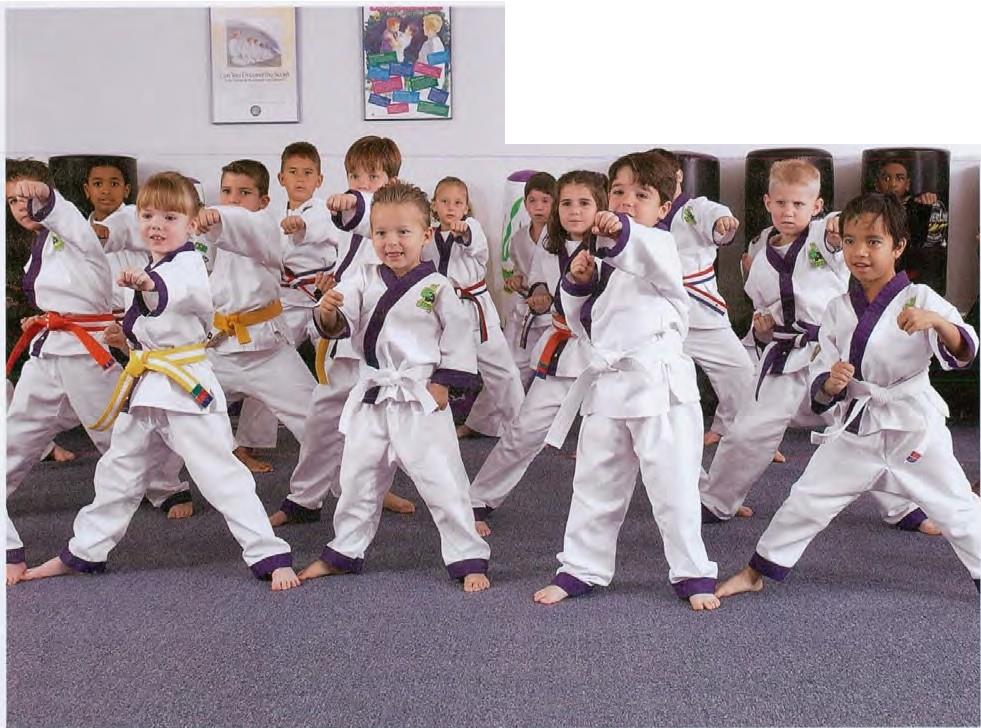
LJ
Another important part of the Martial Arts Code of Conduct is order. Order means keeping ourselves and our lives organized. It means keeping our rooms neat by putting our things in their proper place. It means doing the jobs we are asked to do by our parents and teachers, and being on ti1ne.
17
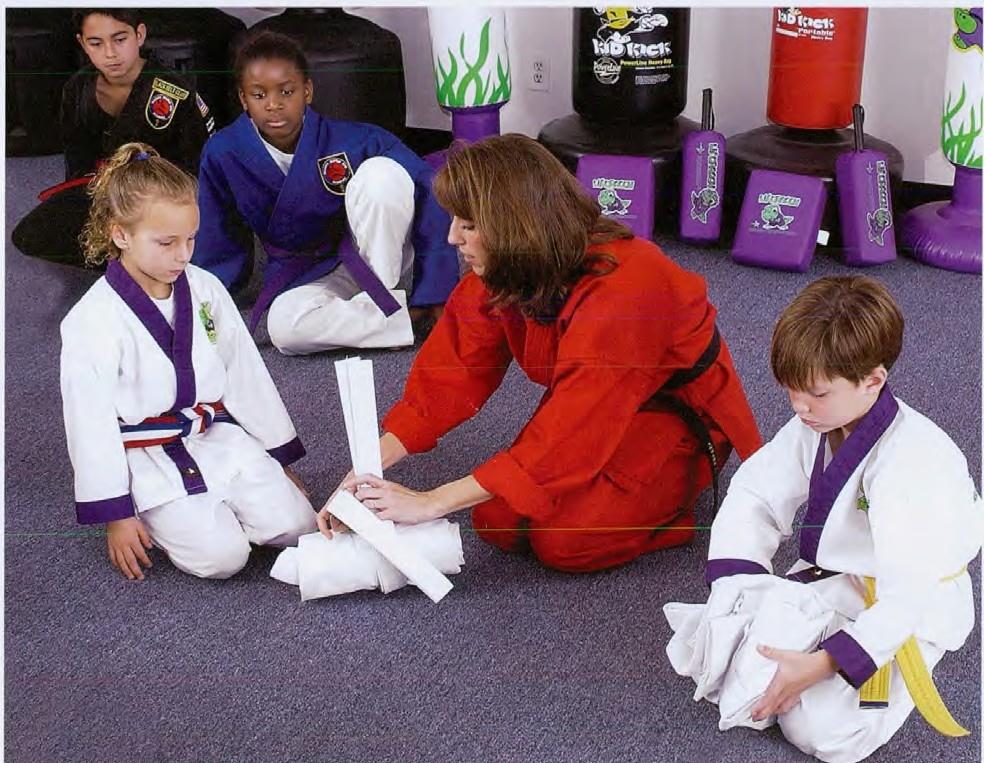
In our martial arts school we create order when we line up our shoes and put away our clothes and schoolbooks in our lockers. We are taught to fold our martial arts uniforms neatly and to keep them clean. When we line up in class we are asked to stand up tall, form a straight line, and look to the front. This creates order in our group and helps us to work together as a team.
18
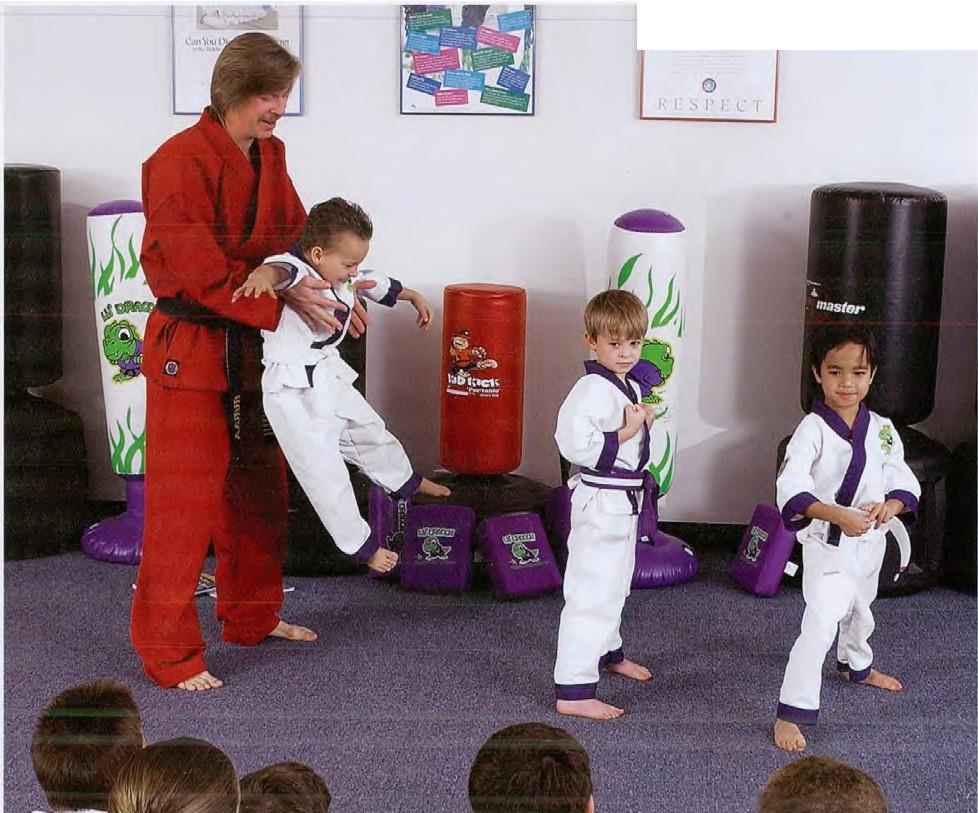
The Martial Arts Code of Conduct also teaches us about humility. Humility means not taking ourselves too seriously or thinking that we are better or more important than others. Being humble means thinking of others before ourselves.
"'\
,.
,
f
19

The Martial
Arts Code of
Conduct teaches
that wisdom is
understanding
what makes us
afraid. Our
teachers show us
how fear creates
conflict, like our
fear of bullies.
They teach us
that fear is
created by the
way we think,
which creates
the way we feel.
And the way we
think and feel
creates the way
we act.
20
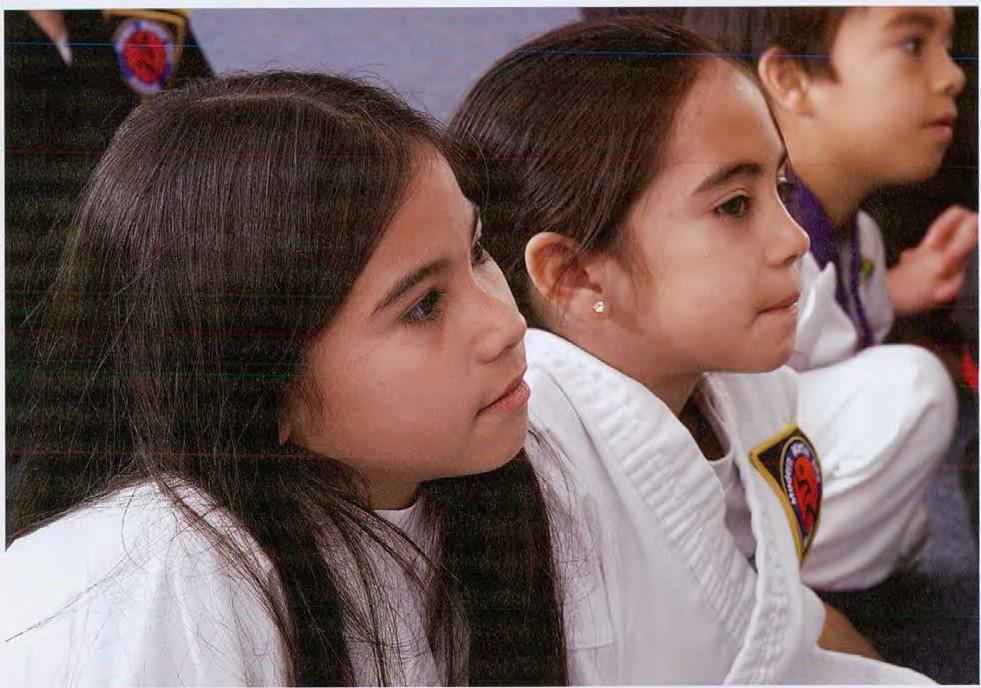
When a bully cells us that he or she is going to "get us" we bec01ne afraid all the time we are waiting for the bully to do something. Every time we think of the bully, up pops that feeling of fear. That image of the bully in our brain comes from what our teachers call "conditioning." Our teachers tell us that is the way all conflict happens, from the bully on the playground to the bully on battlefield.
21
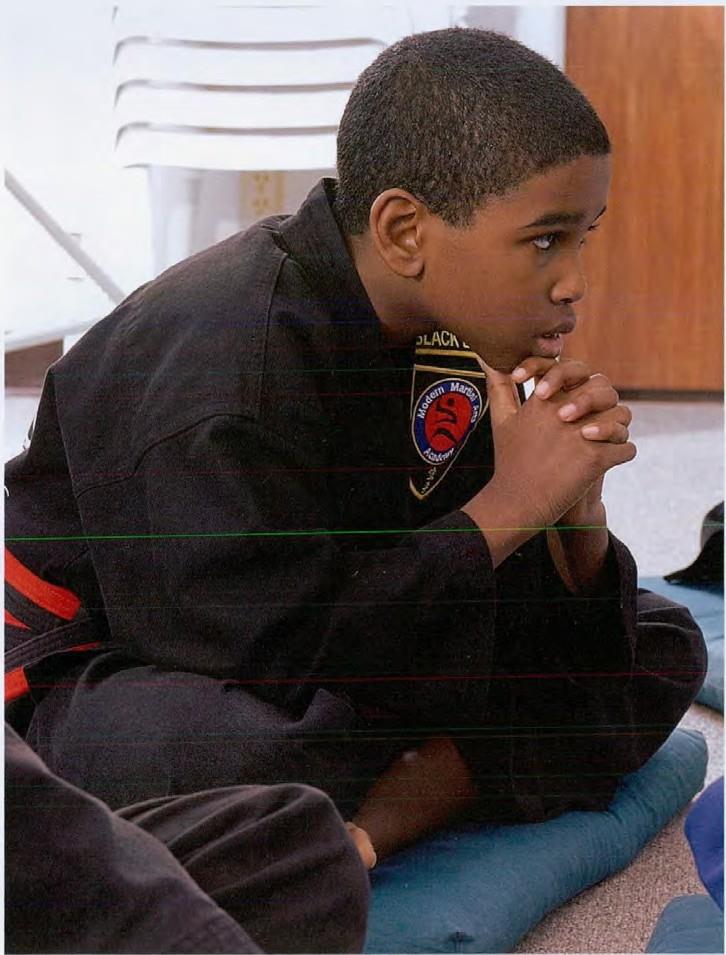
Conditioning is
like having a
picture stuck in
our brains that
just will not go
away. The
harder we try
not to think the
fearful thought,
not to not see
the scary image,
the more we
think aboul it
and see it. That
thought and
image keeps
reminding us of
something in the
past that we are
afraid of. It is
like having a
bad dream but
being awake.
22
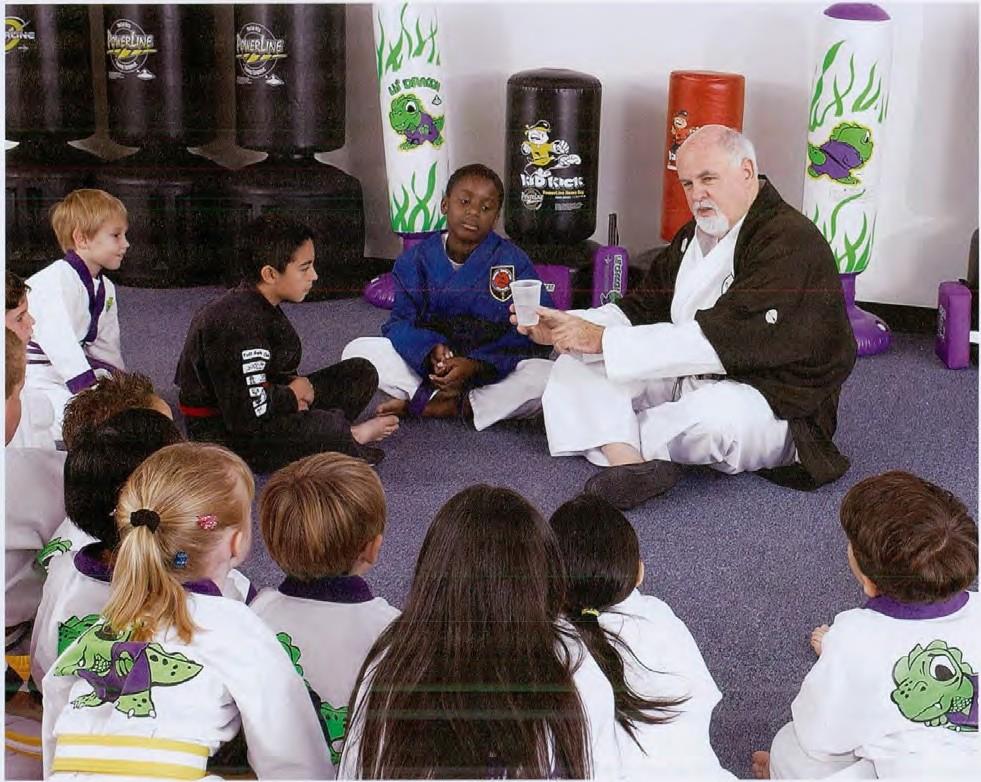
Our teachers show us how to sit quietly and just watch our thoughts, to let them just pass through our brains without doing anything about them, just let-ting them come and go. It's like watching bubbles in a glass of soda float up from the bottom of the glass to the top where they just disappear.
23

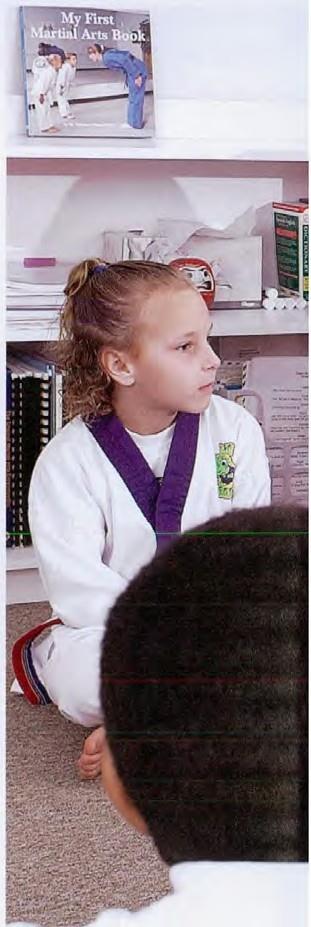
Sitting quietly we can see how fearful thoughts and feelings arc created. We see that they are only thoughts and cannot really hurt us. When we sit and just watch them, without deciding they are bad or fearful, after a while tl1ey get less and less important. Eventually they just fade away.
At the end of each class, after we have practiced our physical 1nartial arts, we sit in a circle and talk about the Martial Arts Code of Conduct. Our teachers ask us questions and we try to answer. They call this time
"Mental Sparring.,, res fun to think about these things. It exercises our brains, keeping them mentally fit just like we keep our bodies physically fit.
24

25
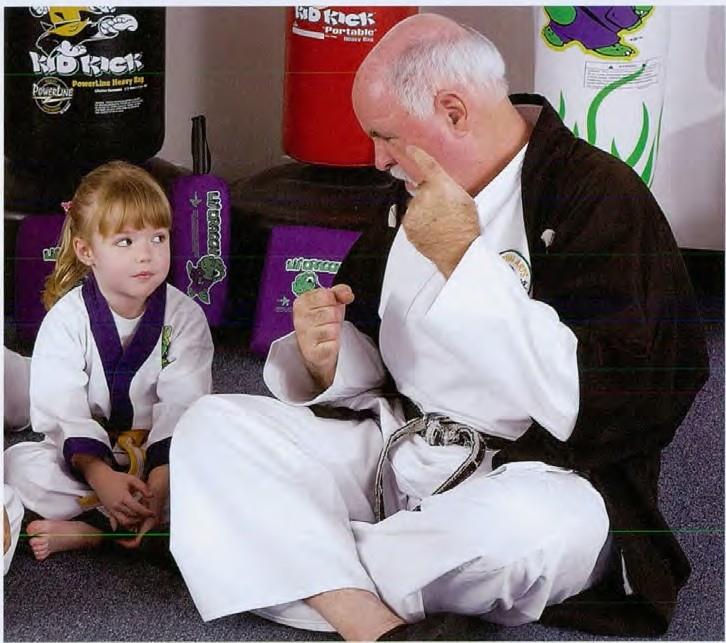
Our Leachers say that the martial arts will help us become intelligent in our day-to-day lives and in our relationships with other people. Being intelligent means stopping to think before we act. It 1neans thinking of what the right thing to do is when we are unsure. In class we are taught how to defeal the bully the smart way-without having to fight or to run away in fear. We learn ways to slop bullying by using our brains instead of our fists.
26

The Martial
A Martial Arts
Arts Code of
Champion for
Conduct also
Peace is a real
teaches us to
hero, like Dr.
love. Love, our
Martin Luther
teachers tell us,
King,Jr., Eleanor
means being a
Roosevelt, or
Martial Arts
Caesar Chavez.
Champion for
They were con-
Peace. True
cerned about
champions are
what prevented
those who care
peace, that is,
for their fellow
what created
human beings,
conflict among
who stand up
people. Like
bravely for what
them, Martial
is right, and
Arts Champions
who protect all
are leaders who
living things
use their knowl-
from harm.
edge and skills
for peace.
27
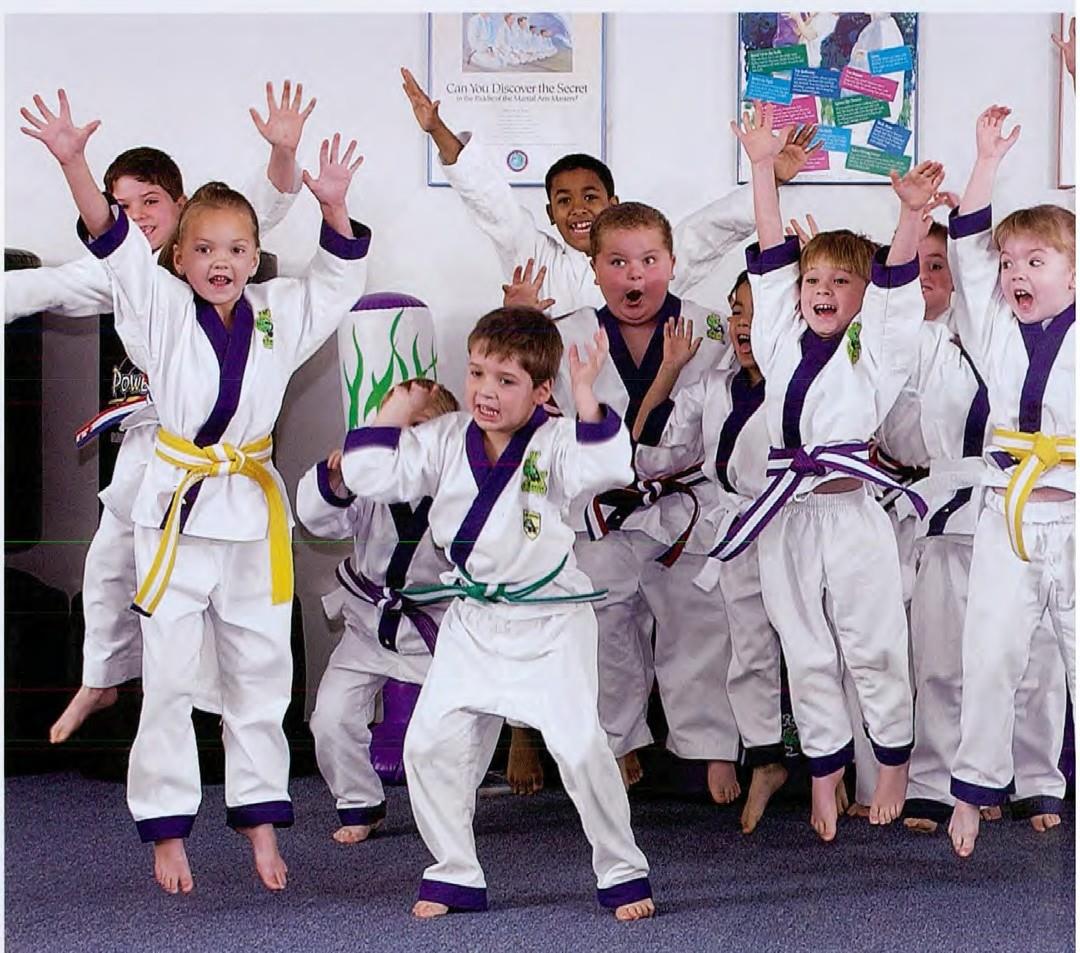
28
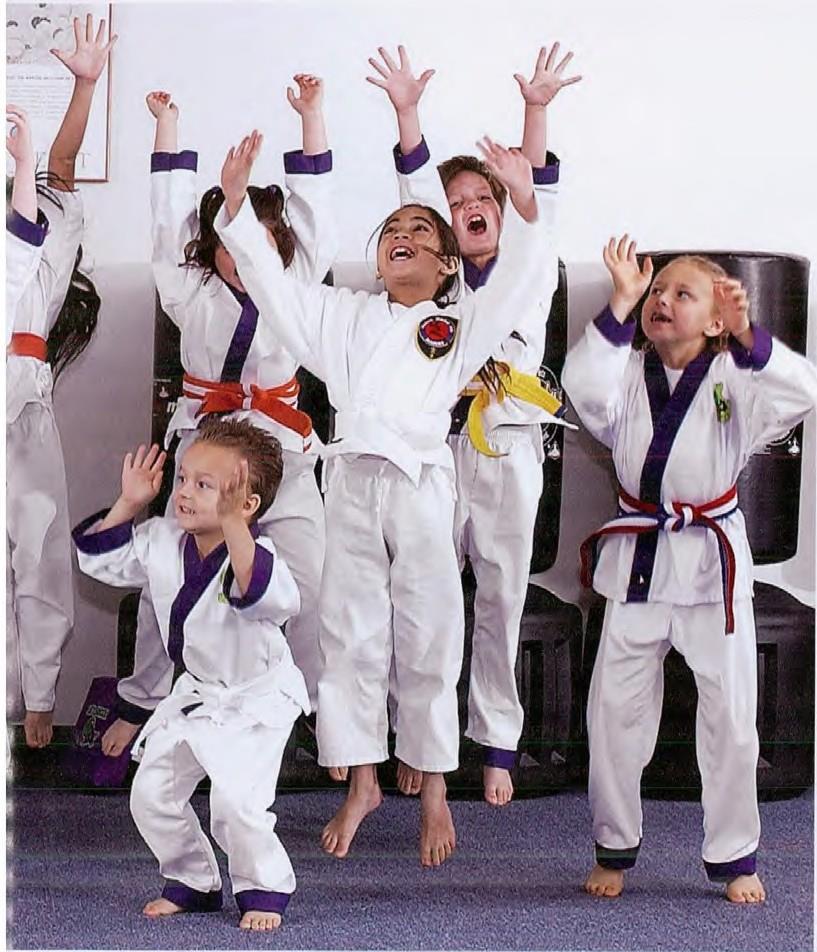
We are very
happy Lo go to a
martial arts
school that is for
peace, one that
teaches us how
to get along in
the world. Our
parents and
schoolteachers
are also happy
because they
know that
studying the
martial arts
together with
the Martial
Arts Code of
Conduct will
help us to be
safe and develop
good character.
29

30
Note to Parents
The Martial Art Code of Conduct is the foundation of all martial arts, for it emphasizes living a life of good will and peace. The Martial Arts Code of Conduct is whal we call "manners" or "social skills,"
t.hat behavior that promotes right relationships between people. It may seem like a contradiction to teach this within the ''martial" arts, arts of self-protection. But in fact this is the very place they must be taught in order Lo help prevent conflict in relationships. The ult:imat.e goal of Martial Arts for Peace'" is to stop conflict before it happens.
Having d1ese social skills reduces d1e chance that the student will react out of fear to a possible threatening situation such as being bullied. Combined with the confidence that comes from knowing how Lo protect oneself, the social skills outlined in this book, and in the leader's guide that accompanies this book, can reduce the pot.ent.ial for conflict. This is what ilie martial arts are really all about-understanding and resolving conflict peacefully. Therefore Martial Arts for Peace 11' has an in1portant role to play in the lives of yoW1g people growing up in this challenging world.
This book is for children aged 4 to 9. It is probably advisable to read this book to younger children, explaining some of the concepts.
Older children can read the book themselves, asking questions of you if need be. Most important is that you both understand the difference between the often violent. portrayal of martial arts in the popular media, and the m.1e spirit and goals of martial arts practice. Moreover, if you decide thal martial arts practice is right for your child, make sure you choose a school that reflects these higher goals. For help in doing this, please consult Dr. Webster Doyle's Martial Aris Guide far Parents.
31
Want to get in touch with us? Then write, call, or e-mail.
Martial Arts for Peace Association,
P.O. Box 816, Middlebury, VT 05753
800-848-6021 I 800-966-1998
mapp8@aol.com
Want to sec more of our books? Then check out our web page:
www.martialartsforpeace.com
Want to order our books? Then call or e-mail our publisher: Weathcrhill, Inc.
41 Monroe Turnpike, Tiumbull CT 06611
Tel: 800-437-7840 I Fax: 800-557-5095
weatherhill@weatherhill.com
DR. TERRENCE WEBSTER-DOYLE is a martial arts sixth-degree black belt, former school teacher and administrator, Juvenile Delinquency Prevention Commission task-force member. and the co-parent of Eve daughters. He has written 21 internationally acclaimed, award-winning books on conflict education and the martial arts, and is co-founder and director of Martial Arts Partners for Peace.
32
